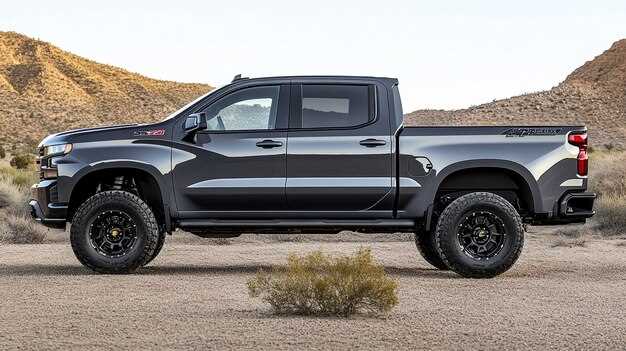
When it comes to selecting a robust and reliable truck, the Toyota Tundra and the Chemmy Silverado are often at the forefront of discussions among consumers. Both vehicles boast a rich history and a loyal fan base, making the choice between them crucial for truck enthusiasts and casual buyers alike. In this comprehensive comparison, we will delve into key elements such as performance, capabilities, interior comfort, and safety features that set these two models apart.
The Chevy Silverado has established a reputation for its powerful engine options and impressive towing capacity, making it an excellent choice for those who require exceptional performance for work or recreation. On the other hand, the Toyota Tundra is renowned for its durability and reliability, often appealing to buyers looking for a long-term investment in their vehicle. By examining these attributes closely, potential truck owners can make an informed decision that aligns with their needs.
Additionally, both trucks feature advanced technological integration and safety capabilities that enhance the driving experience. With varying trims and options available for each model, customization opportunities abound, catering to different lifestyles and preferences. In the following sections, we will analyze these aspects in detail to determine how well the Toyota Tundra and Chemmy Silverado measure up against each other in the competitive truck market.
Performance Capabilities of Toyota Tundra vs. Chevy Silverado

The Toyota Tundra and Chevy Silverado are both recognized for their robust performance capabilities, making them popular choices among truck enthusiasts. Each vehicle brings its own strengths to the table, appealing to different needs and preferences in the full-size truck segment.
The Toyota Tundra is powered by a standard 3.5-liter twin-turbo V6 engine, producing an impressive range of horsepower and torque, making it suitable for heavy towing and hauling tasks. With a maximum towing capacity of around 12,000 pounds, the Tundra boasts a significant advantage for those needing to transport heavy loads. Additionally, the Tundra features a unique multi-link rear suspension system, enhancing ride quality and stability, especially when fully loaded.
On the other hand, the Chevy Silverado offers a wider range of powertrains, including a 2.7-liter turbocharged four-cylinder, a 5.3-liter V8, and a 6.2-liter V8 engine. This variety allows consumers to choose an engine that best fits their performance needs, whether that be fuel efficiency or maximum power. The Silverado’s substantial towing capacity reaches up to 13,300 pounds when equipped with the right engine and configuration, slightly outperforming the Tundra in specific applications.
In terms of off-road capability, the Toyota Tundra offers the TRD Pro trim, which includes features like a lifted suspension, skid plates, and specialized off-road tires. This makes it a versatile choice for adventure-seekers who require a truck that can handle rugged terrains. The Chevy Silverado also has an off-road variant known as the Z71 package, providing features like off-road shocks and an automatic locking rear differential, catering to those who prioritize off-road prowess.
Both trucks come equipped with advanced technology options that enhance their performance. The Tundra’s available adaptive cruise control and the Silverado’s advanced towing assist technology promote superior handling and safety on the road. In conclusion, while the Toyota Tundra excels in towing capacity and off-road capabilities, the Chevy Silverado offers versatility with its variety of engines and slightly higher maximum towing ratings. The choice ultimately depends on the specific performance requirements of the buyer.
Fuel Economy Ratings: Tundra Against Silverado
When comparing the fuel economy ratings of the Toyota Tundra and the Chevy Silverado, it is essential to consider the various engine options and configurations available for each truck. The Tundra, known for its robust performance, traditionally focuses on power over fuel efficiency, which can impact its overall ratings.
The latest Toyota Tundra is equipped with a twin-turbo V6 engine, offering a significant improvement in fuel efficiency compared to its predecessor, which featured a V8. This new powertrain allows the Tundra to achieve an estimated fuel economy of around 18 mpg in the city and 24 mpg on the highway, giving it a competitive edge among full-size trucks.
In contrast, the Chevy Silverado offers both V6 and V8 engine options, catering to a broader audience seeking a balance between power and efficiency. The Silverado’s base engine, a 2.7-liter turbocharged inline-four, boasts impressive ratings of approximately 21 mpg in the city and 23 mpg on the highway. Meanwhile, the 5.3-liter V8 engine provides more power but at the cost of efficiency, rounding up to 17 mpg in the city and 24 mpg on the highway.
Overall, while the Tundra has made strides towards improving its fuel economy, the Silverado still maintains an advantage in certain configurations. Buyers should carefully evaluate these ratings based on their own needs, weighing power against efficiency when deciding between the Tundra and the Silverado.
Pricing and Value: Analyzing Tundra and Silverado Options

When comparing the Toyota Tundra and Chevy Silverado, pricing and value are crucial factors for potential buyers. Both trucks offer different pricing structures and feature sets that cater to varying needs and budgets.
The base model of the Toyota Tundra typically starts at a higher price point compared to the base Chevy Silverado. However, the Tundra’s higher starting price often reflects its reputation for reliability and robust build quality, which can offer long-term value. The Tundra’s standard features may include advanced safety systems and a powerful V8 engine, which contribute to its overall allure.
On the other hand, the Chevy Silverado provides a wider range of trims and configurations, which can lead to a more customizable pricing structure. Starting with a more affordable base model, the Silverado allows buyers to choose options that fit their specific requirements without overspending. This flexibility makes it an attractive option for those seeking a balance between performance and price.
When evaluating additional features and packages, the Silverado often provides more value for money. Options like various engine choices, towing capabilities, and a modern infotainment system can enhance the driving experience while remaining competitively priced. In contrast, the Tundra’s additional features may come at a premium, which could deter budget-conscious buyers.
Resale value is another important consideration. Both trucks generally maintain strong resale values, but the Tundra is known for its durability and lower depreciation rates, making it a sensible investment over time. Silvaardo, while competitive, may see more variability depending on market conditions and trim level popularity.
Ultimately, the decision between the Toyota Tundra and Chevy Silverado should consider both initial pricing and the perceived value offered by each option. Potential buyers should thoroughly assess their needs, preferences, and budget to determine which truck provides the best overall value for them.
